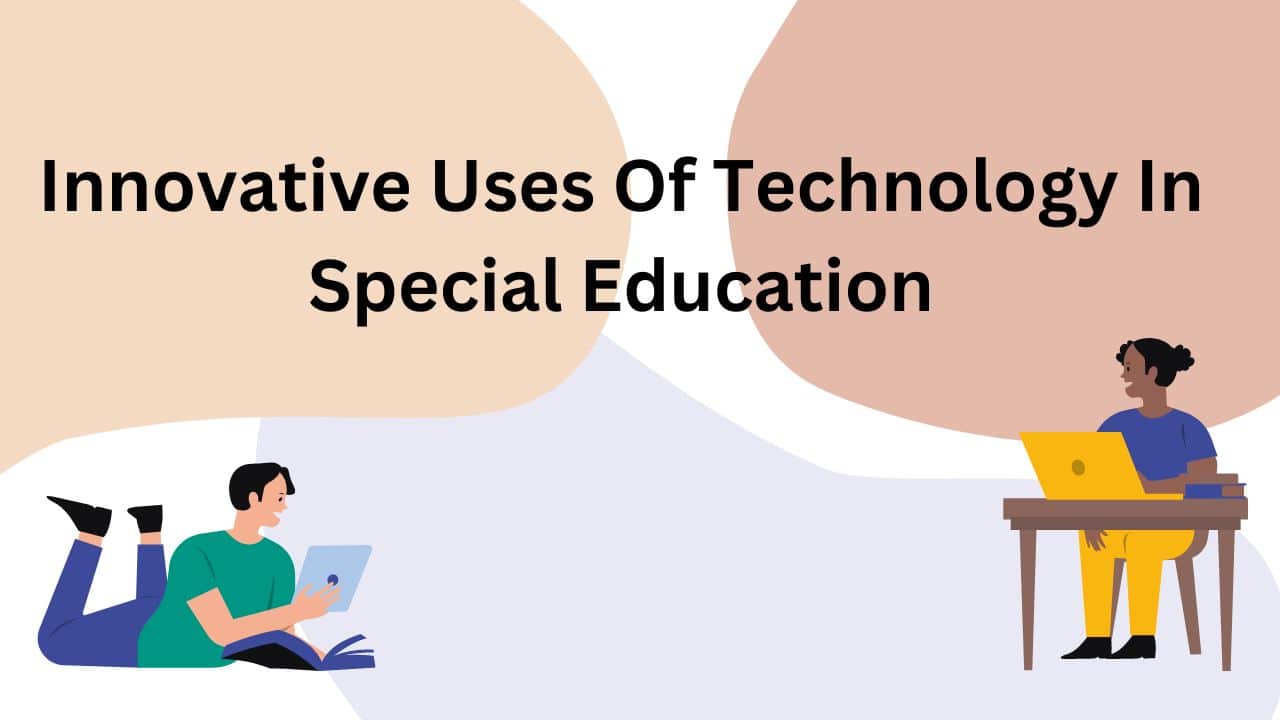In recent years, technology has revolutionized the field of special education, providing new avenues for personalized learning, accessibility, and inclusion. Innovative uses of technology have empowered students with special needs to overcome challenges, enhance their learning experiences, and reach their full potential. This article explores various innovative technologies that are transforming special education and discusses their benefits and potential applications.
Assistive Technologies
Augmentative and Alternative Communication (AAC) Devices: AAC devices help individuals with communication difficulties express themselves. These devices range from basic picture boards to sophisticated speech-generating devices, enabling students with speech impairments to communicate effectively.
Text-to-Speech and Speech-to-Text Tools: These tools assist students with reading and writing disabilities by converting written text into speech or vice versa. They enhance access to educational materials and support students in expressing their ideas and thoughts.
Sensory Technologies: Sensory technologies, such as sensory boards and interactive tactile devices, cater to students with sensory processing disorders. They provide multisensory experiences and help students develop sensory integration skills.
Virtual Reality (VR) and Augmented Reality (AR)
Virtual Field Trips: VR and AR technologies allow students to explore virtual environments and embark on immersive field trips without leaving the classroom. This offers unique learning experiences for students with physical disabilities or limited mobility.
Simulation and Role-Playing: VR and AR simulations provide safe environments for students to practice real-life scenarios. For example, students with autism can engage in social interactions through virtual role-playing, helping them develop social skills and increase their comfort level in social situations.
Spatial Awareness and Conceptual Understanding: VR and AR can aid students with cognitive disabilities in understanding spatial relationships and abstract concepts. These technologies provide visualizations and interactive experiences that enhance comprehension and retention.
Personalized Learning Platforms
Adaptive Learning Software: Adaptive learning platforms use artificial intelligence to tailor instruction and resources to students’ individual needs. They adjust the difficulty level, pacing, and content to match students’ abilities, allowing them to progress at their own pace.
Gamification: Gamification elements, such as points, badges, and leaderboards, can motivate and engage students with special needs. Gamified learning platforms make learning enjoyable, promote skill development, and provide immediate feedback.
Data-Driven Insights: Personalized learning platforms collect and analyze data on students’ performance, enabling teachers to gain insights into their strengths, weaknesses, and progress. This data-driven approach allows educators to make informed decisions and provide targeted support.

Communication and Collaboration Tools
Video Conferencing and Online Collaboration Platforms: These tools facilitate remote communication and collaboration among students, teachers, and therapists. They bridge geographical barriers and ensure access to specialized services and resources, benefiting students in rural areas or those unable to attend physical classes.
Digital Portfolios and Sharing Platforms: Digital portfolios allow students to showcase their work, achievements, and progress. These platforms promote self-expression, encourage collaboration, and foster a sense of pride and ownership.
Parent-Teacher Communication Apps: Dedicated apps and platforms enable seamless communication between parents and teachers. Parents can receive updates, access resources, and collaborate with educators, promoting a strong home-school partnership.
Assistive Software and Apps
Text-to-Speech and Speech-to-Text Apps: These apps assist students with reading and writing difficulties, supporting them in accessing and producing written content.
Organizational and Study Apps: Assistive apps provide organizational tools, reminders, and study aids that help students with executive functioning challenges manage their time, tasks, and assignments more effectively.
Visual Supports and Social Stories: Visual support apps offer visual schedules, timers, and social stories to assist students with autism spectrum disorders in understanding routines, managing transitions, and comprehending social cues.
Conclusion
Innovative technologies have opened up new possibilities for students with special needs, revolutionizing special education. From assistive technologies and virtual reality to personalized learning platforms and communication tools, technology is transforming how students with disabilities learn, communicate, and engage with the world. By embracing these innovative uses of technology, we can create inclusive educational environments that empower every student to thrive and reach their full potential. The continued exploration and implementation of technology in special education hold the promise of further advancements and increased accessibility, ultimately transforming the lives of students with special needs.
